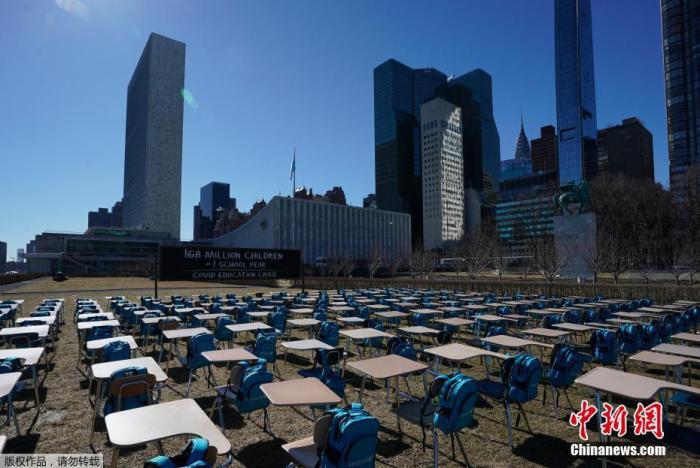China News Service, March 3, according to the United Nations website, according to new data released by UNICEF on the 2nd, due to the blockade caused by the new crown epidemic, schools for more than 168 million children around the world have been completely closed for nearly a year.
One-seventh, or approximately 214 million children, have missed more than three-quarters of offline learning opportunities.
On March 2, local time, outside the United Nations Headquarters in New York, United States, UNICEF set up an "epidemic classroom".
Among them, each seat represents 1 million children, and schools in the countries where these children are located have been completely closed for nearly a year.
This analysis report on school closures pointed out that from March 2020 to February 2021, schools in 14 countries around the world have basically remained closed.
Two-thirds of these countries are in Latin America and the Caribbean, affecting nearly 98 million school children.
Among these 14 countries, Panama’s schools have been closed for the longest time, followed by El Salvador, Bangladesh and Bolivia.
UNICEF Executive Director Henrietta Fauer said: "Over time, children who cannot receive offline education become more and more out of date, and the most marginalized children pay the most.
On March 2, local time, outside the United Nations Headquarters in New York, United States, UNICEF set up an "epidemic classroom".
Among them, each seat represents 1 million children, and schools in the countries where these children are located have been completely closed for nearly a year.
Studies have shown that school closures can have devastating effects on children’s learning and health.
The risk that the most vulnerable children and children without distance education will never return to the classroom is also increasing, and they are even forced to accept child marriage or child labor.
According to the latest data from UNESCO, more than 888 million children around the world continue to face education interruptions due to the complete or partial closure of schools.
In order to arouse people’s attention to the educational emergency and raise awareness of the need for school opening, UNICEF announced on the 2nd the "Classroom in the Pandemic", a model classroom consisting of 168 empty tables. Each table represents one million children living in a country where schools are almost completely closed.
Fore said: "... we don't want closed doors and closed buildings to conceal the fact that our children's future is being put on hold indefinitely. This symbolic classroom sends a message to the government: we must Putting the reopening of schools first, we must prioritize reopening schools better than before.

